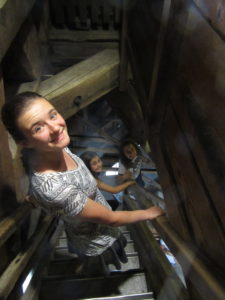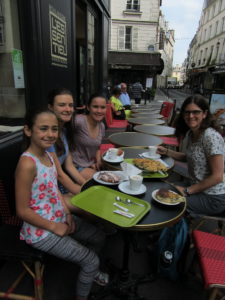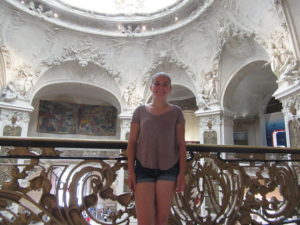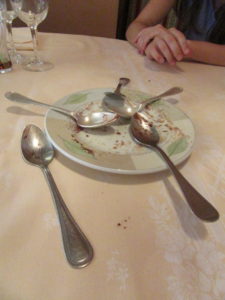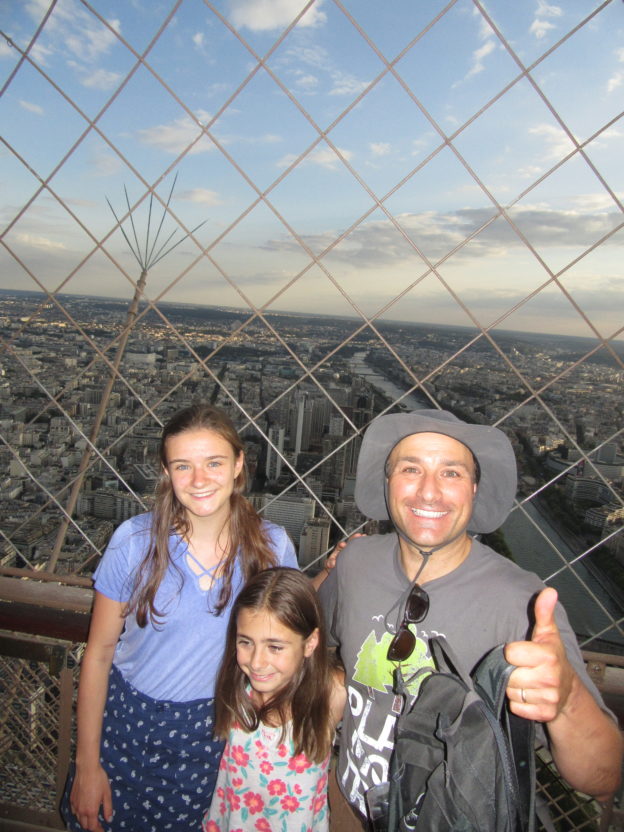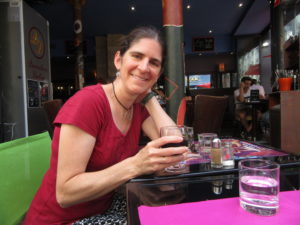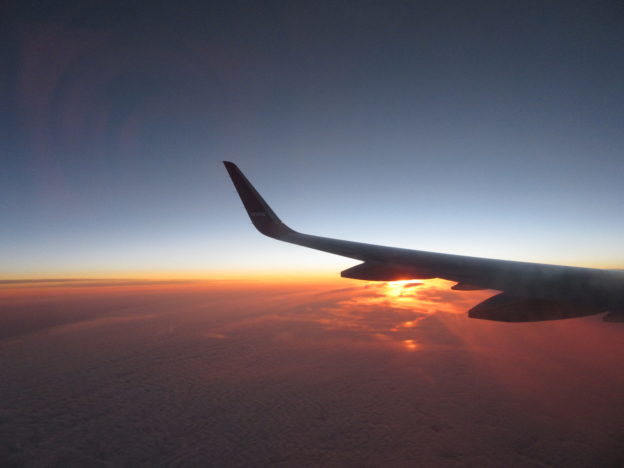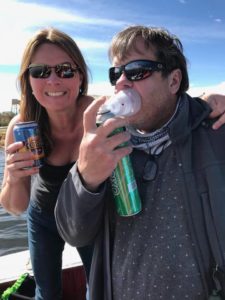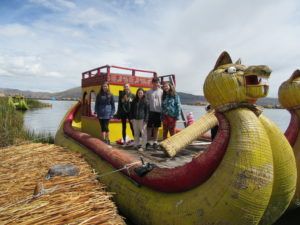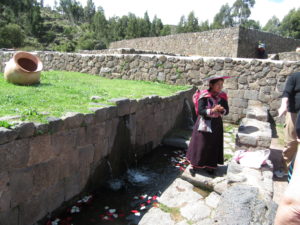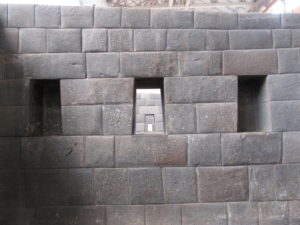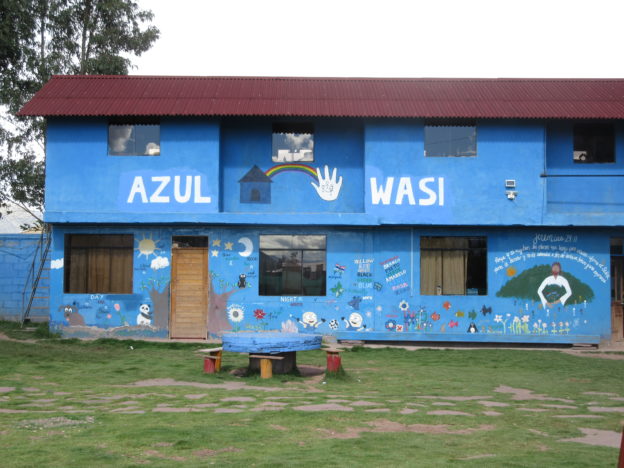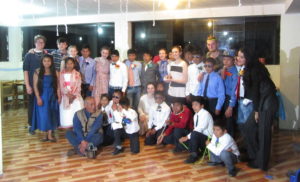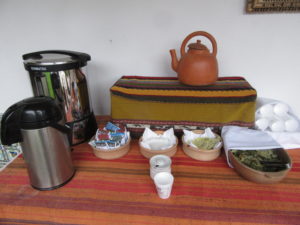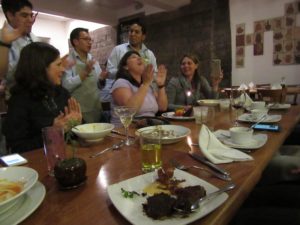When I reflect back on Paris, I think the thing that will first come to mind is…stairs.
Stairs to the Arc de Triomphe. Stairs to the Eiffel Tower. Stairs to the top of the towers in Notre Dame. This in addition to all the regular stairs one comes across during a normal Paris outing — stairs to the second floor apartment, stairs to the Metro, stairs to the Seine. Combined with the miles and miles of walking we’ve done each day, I surely have calves of steel by now. I think the children are nearing mutiny and I’m starting to dream about spiral staircases.
I was actually prepared to skip the Eiffel Tower, when I saw the size of the line. (Who knew so many people would be willing to take the stairs? The line was only marginally shorter — and the tickets marginally cheaper — than the elevator. I was assuming we’d waltz right in past a long line of elevator people. I guess that’s Europeans for you.) Nadia was downright eager to skip it (and ended up only making it to the first level). Bob was clearly of the same mindset as Nadia, but apparently took it as a test of his manhood to force himself to the top of the tower.
At least the stairs didn’t seem all that tiring, because of the adreneline rush you get from climbing inside a flimsy-seeming metal cage, surrounded by views of dizzying drops. This helped us make rapid time up to the second level. In the end we were happy we’d gone up and happy we’d done it the hard way. (See Lanie’s post for photos.)
I shouldn’t complain that much, though, because Zoe has it much worse. She has to run almost every day for her cross country team, lest she feel the wrath of her coach, Fergus. Fergus apparently doesn’t accept any excuses about how you walked 15 miles or climbed 8000 stairs today. So at the end of our long days, after the walking and climbing, when I can barely hobble across the street to the creperie, Zoe usually has to go out and run five or six miles. We found a lovely park near our apartment (the Jardin de Luxembourg) where she can run around the perimeter and we can keep tabs on her as she goes by. Bob has been valiantly running part of the way with her,
but eventually he loses steam and she has to do a couple more laps on her own. (Our days are so long that usually we barely fit the runs in before the park closes at 9:30pm. Luckily it stays light until almost 10:00 here!)
As I mentioned in a prior post, we completely failed in our usual plan to combat jet lag, which involves staying up until 7 or 8 at night then sleeping twelve hours or so and waking up to a normal schedule. Instead, on our first day we ended up being awake way too late, then slept until noon on Day 2. Of course, this led to us being unable to sleep at a normal hour that night. At 2:30am
all the children had wandered restlessly out of their various bedrooms, and Bob and I were still up as well, and this does not make for happy parents. So I’ve been setting the alarm gradually earlier each day, starting at 9:30 on Day 3.
To give our legs a bit of a break, we bought tickets for the Batobus, a boat that lets you hop on and off at various sites along the Seine. We
were able to hop on the boat at the lovely Jardin de Plantes and ride it over to the Champs Elysees, Paris’s famous luxury shopping street. We took in the massive, glass-walled Grand Palais (constructed for the 1900 World’s Fair). Tucked on one side of it was the Palais de Decouverte, a science museum.
We figured it would just be a small place, but it turned out to be quite impressive (as well as being housed in an amazing palace). Our main problem in
science museums is that Zoe likes to read every word of every exhibit, while Nadia tends to glance around for 30 seconds and declare she’s ready to move on. Since Zoe is working in a microbiology lab this summer, we let her spend a fair amount of time in the excellent temporary exhibit devoted to Pasteur. Fortunately for Nadia, most of the other exhibits were only in French, so Zoe was somewhat thwarted (though she was willing to attempt to read the French, which made the process even longer). As it was, Zoe would have happily spent the rest of the day but other activities, and lunch, were calling.
 Then we had to walk again, up the avenue to the Arc de Triomphe. Throughout the walk we were looking for a creperie for a casual lunch, but such places are thin on the ground on the Champs Elysees. By the time we’d climbed the Arc, admired the views of the 12 avenues radiating outward, and made our way back down, people were definitely getting seriously hungry. We decided to go onward to the Eiffel Tower on foot and hoped to find a creperie on the way — but were foiled once again. Eventually, after going out of our way and doing much fruitless walking, we settled for an Italian restaurant that was well-liked for its food but charged us a small fortune for drinks, which weren’t even alcoholic. (The kids remember it very fondly, though, since the
Then we had to walk again, up the avenue to the Arc de Triomphe. Throughout the walk we were looking for a creperie for a casual lunch, but such places are thin on the ground on the Champs Elysees. By the time we’d climbed the Arc, admired the views of the 12 avenues radiating outward, and made our way back down, people were definitely getting seriously hungry. We decided to go onward to the Eiffel Tower on foot and hoped to find a creperie on the way — but were foiled once again. Eventually, after going out of our way and doing much fruitless walking, we settled for an Italian restaurant that was well-liked for its food but charged us a small fortune for drinks, which weren’t even alcoholic. (The kids remember it very fondly, though, since the
waiter gave us a complimentary piece of tiramisu for dessert. Nadia went so far as to enter the phone number on her phone, as though she plans to order takeout in the future. I personally didn’t feel that the tiramisu was worth the almost $60 that we paid for four bottles of water (most restaurants give you tap water for free) and four Cokes.)
Anyway, we were fortified with pizza and pasta and gold-plated water and Coke and tiramisu for our trip up the Eiffel Tower.
Given the line and the climb, we barely made it down in time for the last Batobus of the day at 9:30. (Zoe had to skip her run this time.) That was another reason we climbed so fast — after our experience attempting to take the Metro home from the Eiffel Tower on World Cup day, we were highly motivated to make that boat.
Too exhausted and not hungry
enough to contemplate dinner, we made do with sweet crepes (we finally got our crepes!) from the creperie across the street from our apartment. Jet lag has not totally left us and we’re still staying up too late, but the system has to work eventually. 8:30 alarm for Day 4!



